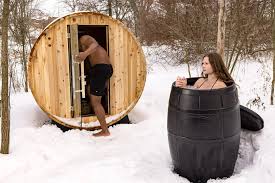In an era where efficiency, performance, and temperature control are critical across industries, water chillers have become an integral part of countless operations. Whether you’re running a high tech data center, a bustling food processing unit, or a sustainable hydroponics setup, keeping temperatures in check is non-negotiable.
you need to know about water chillers, with a spotlight on water cooled chillers and water tank chillers and how they can transform your systems for the better.
Table of Contents
ToggleWhat Exactly is a Water Chiller?
Let’s start with the basics.
A water chiller is a specialized machine that cools water to a desired temperature and then circulates it to equipment, systems, or storage units. Unlike simple air conditioning units, these systems are powerful, precise, and built for consistency especially in environments where temperature deviations could spell disaster.
Core Components of a Water Chiller
-
Compressor – Think of it as the engine; it drives the refrigerant through the system.
-
Evaporator – The section where water is chilled by extracting heat.
-
Condenser – Where heat is released, either into air or water.
-
Expansion Valve – Regulates the refrigerant to control cooling intensity.
Types of Water Chillers You Should Know
Before diving into specifics, let’s explore the three most common water chiller types:
1. Air-Cooled Chillers
These systems use ambient air to cool the refrigerant and are best suited for smaller buildings or facilities where space and budget are tight.
2. Water Cooled Chillers
These are workhorses they use water (often from a cooling tower) to extract heat. You’ll often find these chillers in large buildings, hospitals, and manufacturing plants.
3. Absorption Chillers
Running on heat instead of electricity, these are eco-friendly options for places with surplus steam or waste heat. They’re often used in chemical plants and hospitals.
Deep Dive: What is a Water Cooled Chiller?
Out of all types, the water cooled chiller is the most energy efficient especially when dealing with large cooling loads.
How It Works
Here’s a simplified breakdown:
-
Refrigerant is compressed and turned into a high-pressure gas.
-
This gas travels through the condenser, where it’s cooled using water from an external cooling tower.
-
The liquid refrigerant moves through the expansion valve into the evaporator.
-
The refrigerant absorbs heat from the process water, cooling it down.
-
The cycle repeats nonstop precision cooling.
Why Choose a Water Cooled Chiller?
-
Higher efficiency: Especially in hot climates or enclosed spaces.
-
Longer life expectancy: With proper upkeep, these units can last 20+ years.
-
Quiet operation: Indoor installation = less ambient noise.
-
Smaller footprint: Compact compared to similarly powered air-cooled units.
Common Applications
-
Pharmaceutical labs
-
High-rise buildings
-
Data centers
-
Food and beverage processing
-
Injection molding plants
Water Tank Chillers: Precision Cooling for Stored Water
Now, let’s talk about water tank chillers the unsung heroes for cooling water in tanks used in agriculture, hydroponics, aquariums, and manufacturing.
What Makes Water Tank Chillers Special?
Unlike standard chillers that cool flowing water, water tank chillers are designed to maintain a consistent temperature inside a tank perfect for sensitive processes where water needs to stay within a specific range at all times.
Key Features
-
Built-in or attachable tanks
-
Advanced thermostats for exact temp control
-
Safety sensors for overheating or freezing
-
Compatibility with filtration and water circulation systems
Top Benefits
-
Reliability: Keeps water consistently cool, 24/7.
-
Flexibility: Works with tanks of all shapes and sizes.
-
Health and Safety: Prevents algae growth and bacterial contamination.
-
Energy-efficient: Often includes smart regulation features.
Comparing Your Options: Water Chiller vs Water Tank Chiller
Here’s a quick comparison if you’re unsure which one fits your needs:
| Feature | Water Chiller | Water Tank Chiller |
|---|---|---|
| Use Case | Continuous flow cooling | Cooling stored water |
| Structure | Modular system | Tank-integrated or attachable |
| Applications | HVAC, processing lines | Hydroponics, aquaculture, beverage |
| Temperature Control | Dynamic | Static and consistent |
How to Choose the Right Chiller System
When investing in a chiller, you want to get it right the first time. Here’s how to make an informed choice:
1. Evaluate Cooling Load
Calculate the BTUs/hour or kW needed to cool your equipment or water volume. Oversizing wastes energy; under sizing hurts performance.
2. Factor in Space
Have a mechanical room? A water cooled chiller is perfect. Limited space? Consider a water tank chiller that’s compact and tank-integrated.
3. Consider Ambient Environment
In warmer climates, water cooled chillers are far more effective than air cooled ones. If you’re cooling stored water in tanks, go straight for a water tank chiller.
4. Budget for Operation & Maintenance
Water cooled chillers may cost more upfront but offer long-term savings. Water tank chillers have lower maintenance and are plug-and-play friendly.
Energy Efficiency Tips
Whether you’re using a water cooled chiller or a water tank chiller, here’s how to keep things green and cost-effective:
-
Use smart thermostats for precision control.
-
Insulate water lines to prevent thermal loss.
-
Install variable speed pumps and fans.
-
Schedule regular maintenance and descaling.
-
Monitor real-time data with IoT sensors.
Installation and Maintenance Best Practices
Installation Checklist:
-
Ensure water quality is optimal (low TDS)
-
Maintain proper flow rates
-
Ground all electricals securely
-
Test before commissioning
Routine Maintenance:
-
Flush and refill water circuits every 3-6 months
-
Clean filters monthly
-
Check refrigerant pressure quarterly
-
Perform full diagnostics annually
Real World Applications Across Industries
Here are just a few use cases for water chillers in real-world scenarios:
Healthcare
MRI machines, laboratory analyzers, and sterilization equipment all rely on precise cooling.
Food & Beverage
Used in breweries, dairies, and fermentation facilities to maintain freshness and product quality.
Tech and Data Centers
Keeps servers from overheating in high-density environments.
Hydroponics & Aquaculture
Water tank chillers are ideal for keeping nutrient solutions or aquatic habitats at healthy temperatures.
Trends & Innovations in Water Chillers
The cooling industry is evolving fast, and new tech is redefining what chillers can do.
1. AI-Powered Chillers
These systems learn usage patterns and optimize performance automatically.
2. Eco-Friendly Refrigerants
Low-GWP refrigerants are being adopted to meet climate regulations without sacrificing performance.
3. Hybrid Chillers
Combining air and water cooling technologies for maximum efficiency.
Frequently Asked Questions
Q: Are water chillers noisy?
Water cooled chillers are usually quieter than air-cooled ones due to indoor installation and no large external fans.
Q: Can I install a water tank chiller myself?
Smaller systems are DIY-friendly, but larger setups should be handled by professionals.
Q: Do water cooled chillers need cooling towers?
Yes. They require a cooling tower to remove heat from the condenser loop.
Q: How long does a water chiller last?
With proper care, most units run efficiently for 15–25 years.
Final Thoughts
Choosing between a water chiller, a water cooled chiller, or a water tank chiller isn’t just about specs it’s about matching the right system to your specific needs. Whether you’re managing a complex production facility or growing lettuce in your backyard hydroponic farm, the right cooling system can make all the difference.
Investing in reliable water cooling isn’t just about keeping things chill it’s about performance, precision, and peace of mind.
Author: gust belogr
seo expert



